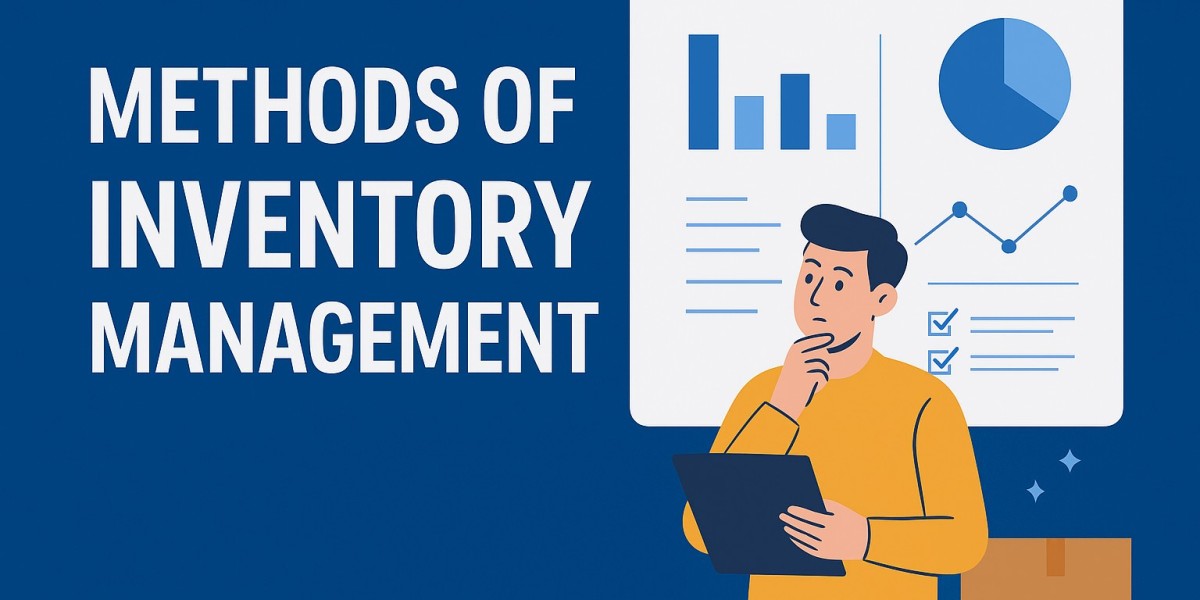Introduction to Inventory Management
Inventory management may sound like a dry business term, but it’s the lifeline of every successful company. Imagine a store without products on its shelves or a factory running out of raw materials mid-production. That’s the chaos poor inventory management creates. At its core, inventory management is all about tracking, controlling, and optimizing the flow of goods.
So, why does it matter? Because it can make or break profitability. Too much stock means tied-up cash and storage costs; too little stock means missed sales and unhappy customers. Finding that balance is where inventory management shines.
Types of Inventory
To manage inventory effectively, you first need to understand the different types businesses deal with:
1) Raw Materials
These are the basic inputs used in manufacturing products. For instance, wood for furniture or flour for bakeries.
2) Work-In-Progress (WIP)
Products that are partially completed but not yet ready for sale.
3) Finished Goods
Ready-to-sell products waiting to reach customers.
4) MRO (Maintenance, Repair, and Operations)
Items used to keep the business running, like cleaning supplies or spare machine parts.
Key Objectives of Inventory Management
The main goal? Balance. Businesses aim to:
- Reduce Costs by avoiding excess storage.
- Meet Customer Demand without delays.
- Improve Cash Flow by keeping money from being trapped in idle stock.
- Minimize Stockouts to prevent lost sales.
Traditional Methods of Inventory Management
Periodic Inventory System
In this system, stock levels are checked at regular intervals (weekly, monthly, quarterly). Simple but often inaccurate in fast-paced industries.
Perpetual Inventory System
A more modern approach that updates inventory in real-time using technology like barcode scanners and software.
Modern Methods of Inventory Management
Just-In-Time (JIT)
Goods are ordered only when needed, reducing storage costs. Toyota famously pioneered this method.
Economic Order Quantity (EOQ)
A mathematical formula that determines the optimal order quantity to minimize costs.
ABC Analysis
Classifies items into three categories:
- A = high-value, low-quantity items
- B = moderate-value items
- C = low-value, high-quantity items
FIFO (First-In-First-Out)
Oldest inventory is sold first—great for perishable goods.
LIFO (Last-In-First-Out)
Newest inventory is sold first—sometimes useful for tax benefits.
Batch Tracking
Tracks products by batch numbers to improve quality control and recalls.
Advanced Techniques and Technologies
Demand Forecasting
Using data to predict future sales and plan stock accordingly.
Safety Stock Management
Keeping extra stock as a cushion against demand surges.
Reorder Point (ROP) System
Automatically signals when it’s time to reorder inventory.
Dropshipping
Retailers sell products without holding inventory—suppliers ship directly to customers.
Challenges in Inventory Management
Even with advanced tools, businesses face challenges:
- Overstocking leading to wasted money and space.
- Stockouts causing unhappy customers.
- Seasonal Demand Fluctuations requiring flexible planning.
- Supply Chain Disruptions due to global issues.
Best Practices in Inventory Management
Want to ace inventory management? Follow these steps:
- Conduct regular audits to avoid errors.
- Define KPIs like turnover ratio and carrying costs.
- Build strong supplier relationships for faster response times.
- Invest in employee training to minimize mistakes.
Benefits of Efficient Inventory Management
When done right, inventory management delivers:
- Cost Savings by reducing waste.
- Higher Customer Satisfaction with consistent product availability.
- Increased Productivity as operations flow smoothly.
- Competitive Advantage by staying ahead of rivals.
Future Trends in Inventory Management
- Automation and Robotics will streamline warehouses.
- Predictive Analytics will make demand forecasting smarter.
- Sustainability Practices will reduce waste and carbon footprints.
Conclusion
Inventory management isn’t just about counting products—it’s about strategy, foresight, and efficiency. Businesses that adopt the right methods, embrace technology, and avoid common pitfalls can cut costs, improve customer satisfaction, and gain a strong competitive edge. Whether you’re running a small online store or managing a global supply chain, mastering inventory management is the secret to long-term success.
FAQs
1. What is the best method of inventory management?
It depends on the industry. For example, JIT works well in manufacturing, while e-commerce often relies on automation.
2. Is FIFO better than LIFO?
FIFO is ideal for perishable goods, while LIFO can sometimes provide tax benefits.
3. How can small businesses manage inventory effectively?
Start with simple tools like cloud-based software and use methods like ABC analysis to prioritize stock.
4. What is the biggest challenge in inventory management?
Balancing stock levels—avoiding both overstocking and stockouts.
5. How does AI help in inventory management?
AI predicts demand, automates reordering, and helps optimize stock placement for efficiency.






